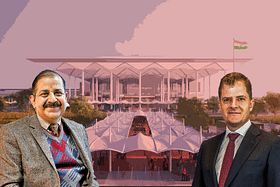The airport’s development is being carried out in four distinct phases, designed to accommodate the growth of both domestic and international passengers and cargo.
Projected to be one of India’s largest airports upon its completion, the Noida International Airport is on track to become operational in 2024.
It will serve as an aviation hub for National Capital Region (NCR) and several adjoining districts of Uttar Pradesh.
While giving an update on the progress of construction work, Yamuna International Airport Private Limited (YIAPL) chief executive officer (CEO) Christoph Schnellmann told Swarajya that “in the next few months, more than 25 buildings will come up at the site, including the passenger terminal, air traffic control (ATC) tower, office blocks, sewage and water treatment plants, and electric substations.”
He added, “The passenger terminal is now up to the first floor, and we are working on the fourth floor of the ATC tower, and the runway work is on across the entire length. The airport is on track to become operational by the end of 2024 with one terminal building and runway, with a passenger capacity of 12 million per year.”
The Upcoming Noida International Airport
The Noida International Airport in Jewar, Uttar Pradesh, spans an expansive 5,000 acres.
The airport’s development is being carried out in four distinct phases, designed to accommodate the growth of both domestic and international passengers and cargo.
The development of the airport began in June 2022. Back in July 2021, the Swiss airport company Zurich Airport International AG (ZAIA) sealed a contract with Noida International Airport Limited (NIAL) to undertake the construction and operation of the airport.
To develop the international airport, Yamuna International Airport Private Limited (YIAPL) has been incorporated — which is a 100 per cent subsidiary of the project concessionaire ZAIA.
Zurich Airport International is a leading global airport operator with a long and successful history with over 75 years of experience.
According to the Schnellmann, “India is one of the key markets for Zurich International Airport, where we developed Bengaluru’s Kempegowda International Airport in 2008.”
Further, the Noida International Airport Limited (NIAL), the governing body overseeing the joint venture project, consists of the UP government, the Noida Industrial Development Authority, the Greater Noida Industrial Development Authority and the Yamuna Expressway Industrial Development Authority (YEIDA) as stakeholders.
This facility stands as a significant example of India’s infrastructural growth.
To gain firsthand insights into this marvel, Swarajya spoke to the key figures driving the development, including YIAPL CEO Christoph Schnellman, CEO of YEIDA and NIAL Arun Vir Singh, and the Nodal Officer Shailendra Bhatia from NIAL.
While tracking the airport’s progress, the aim was to depict the scale of the facility and its transformative impact on the transit sector, aviation and surrounding economic growth.
Understanding The Scale Of The Airport
Situated approximately 72 km from the existing IGI airport in New Delhi and 40 km from Noida, the airport’s strategic location aims to enhance domestic and international connectivity for Delhi-NCR, Noida, and Western Uttar Pradesh.
Schnellmann stated, “It has been more than a year since we awarded the EPC contract to TATA Projects for carrying out the development works. Currently, there are over 5,000 workers who are fully mobilised at the site.”
The airport will be ready to handle both domestic and international flights from day one of the start of operations. “Though we do expect domestic to be more dominant initially and international to pick up as we move ahead,” he added.
Sharing his experience in spearheading the development of this aviation hub, he conveyed, “It has been an exciting journey, developing an efficient, user-friendly, and sustainable new airport for the Delhi NCR and Western UP. Despite facing the unprecedented challenges of Covid-19, we have made great progress in the development of the airport. We have received great support from the government which has enabled us to take strides toward the timely completion of the airport.”
NIA will be a world-class airport with efficient facilities for airlines, hotels, cargo, and commercial partners. It aims to offer short turnaround times and low operating costs for airlines.
Further, the facility will also become an international transit hub, will have a multi-modal cargo hub (MMCH) and two MROs (maintenance, repair and overhaul) — creating it a significant hub for both domestic and international requirements.
On developing the cargo hub, Schnellmann described, “The MMCH concession has been awarded to Air India SATS. The cargo and logistics infrastructure and ecosystem will cater to a differentiated catchment and several upcoming industrial clusters in NCR and Uttar Pradesh, creating a cargo gateway for northern India. Spanning 80 acres of land, it will comprise an integrated cargo terminal combined with an integrated warehousing and logistics zone. This unique logistics zone will offer a transshipment centre, as well as a warehouse zone for freight forwarders and integrators.”
The airport has been allocated 24 hectares of land for city-side developments.
He added, “the concessionaire has awarded contracts to Roseate Hotels and Resorts to build a 220-room property. Additonally, we want to make it a destination with attractive retail, F&B, and entertainment options for travellers, including those visiting Agra and other tourist destinations nearby.”
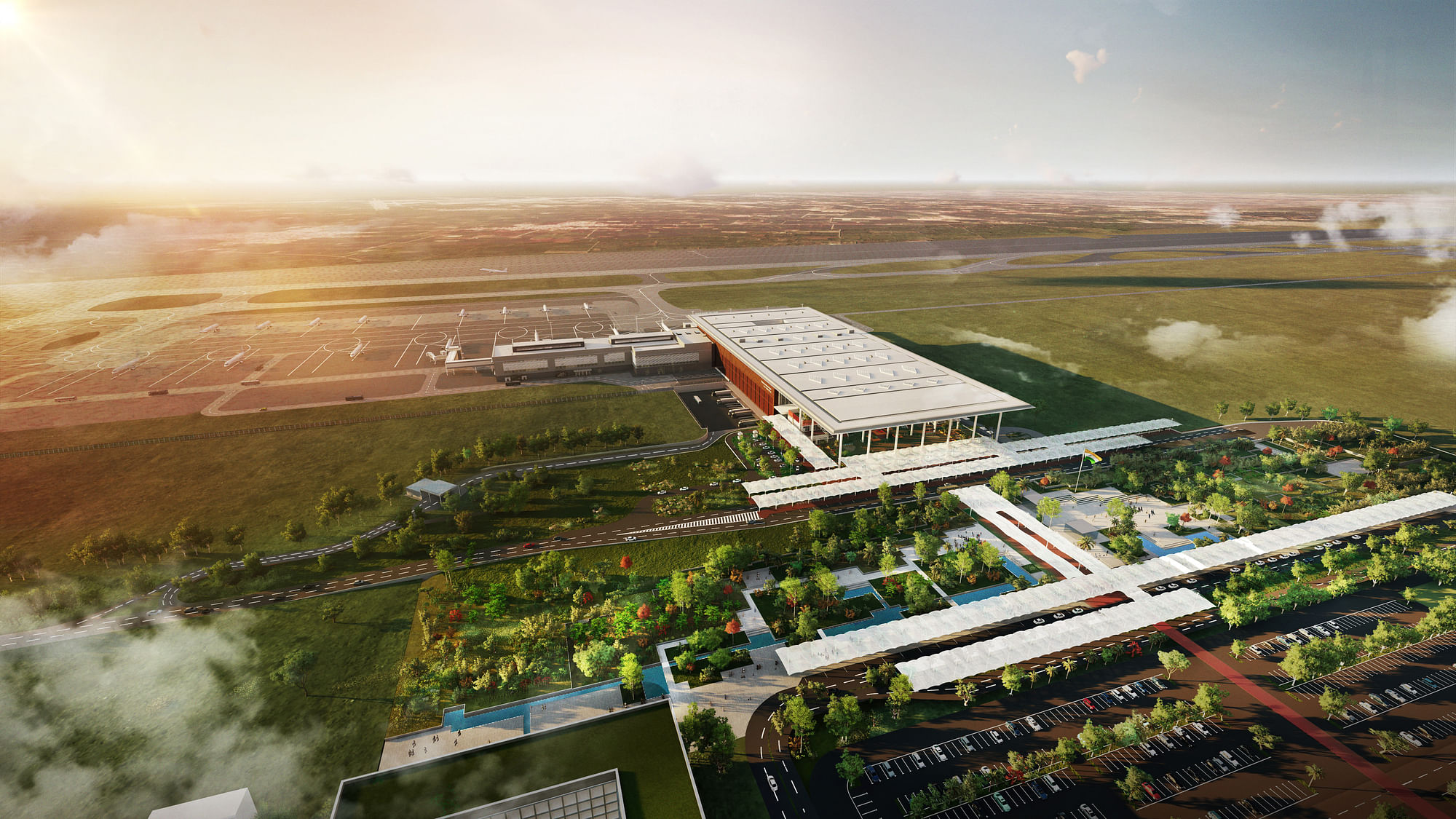
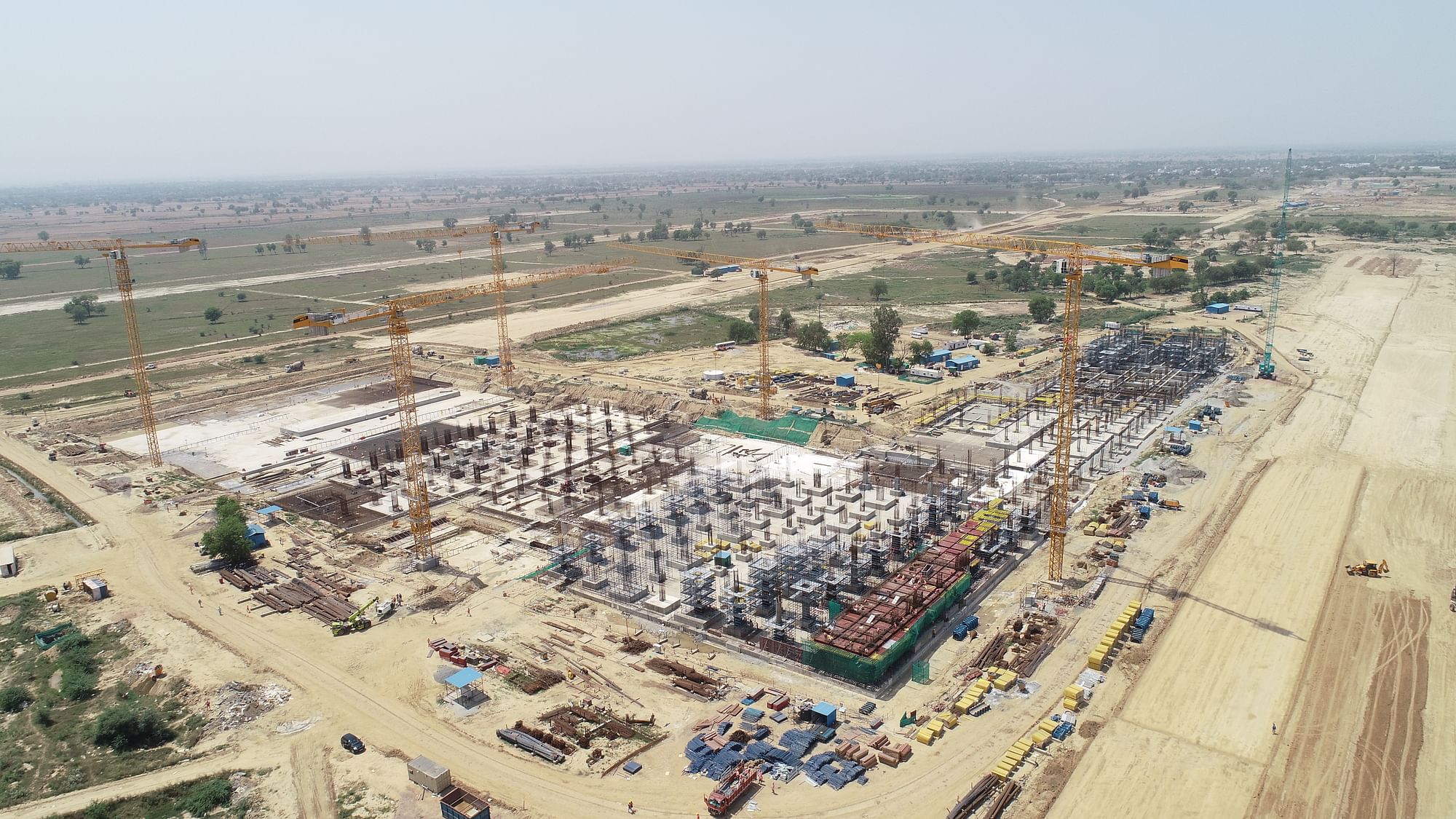
Further, on speaking with Arun Vir Singh, CEO OF NIAL and YEIDA, he told Swarajya, “On completion, the airport’s total passenger capacity is expected to reach 225 million, making it the largest in Asia and the fourth largest globally.”
He added, “The phase-1 will commence with two runways, and subsequent phases will see the addition of three more runways. A dedicated runway for the MRO Facility is planned for Phase-2, taking the total number of runways to six.”
Singh expresses confidence that the airport’s commencement of operations (COD) will happen as scheduled on the fixed date of 1 October 2024.
He foresees the construction to be completed by February of the following year, followed by DGCA tests in the subsequent months.
Infrastructure Advancements Of The Surroundings
The upcoming airport is also driving substantial infrastructure development and creating opportunities in its vicinity.
To maximise its potential, various projects are underway to improve connectivity and promote the growth of industrial sectors in the surrounding areas.
In addition to the MRO facility inside the airport, Singh stated that as part of the second phase, NIAL is additionally planning an MRO facility.
This will be situated adjacent to the airport, covering 1,365 hectares in the north, accommodating a dedicated runway and the MRO facility.
He explained, “Currently, to fulfil maintenance and repair needs, these aircraft have to go to other countries such as Singapore and Dubai. MRO facility is to cater to the domestic flight inventory, which is expected to increase significantly in the coming years. With around 1,600 aircraft orders, the total capacity is projected to reach 2,500 aircraft by 2030.”
“We are talking to big companies like Airbus, Boeing and the authority will take out expression of interest (EOI) for establishing an MRO.”
The land use and zoning for the neighbouring sectors are being planned under the masterplan 2041.
Singh added, that close to 90 per cent of these regions have been designated as industrial sectors, with emphasis on warehousing and logistics infrastructure. He added, seven industrial clusters are in the works and five more are undergoing land acquisition.
These sectors focus on various manufacturing industries, such as the toy park, medical devices manufacturing park, data centre park, EV manufacturing hubs, apparel park, and handicraft park, all of which will be situated alongside the Yamuna Expressway.
Regarding connectivity, Singh informed that a proposal of a rapid rail corridor is in the talks, to bring a direct connection between the IGI and Noida airports.
Further on the transit infrastructure for regional connectivity, the authority has planned implementation of bus rapid transit system (BRTS), pod taxi, and rail systems to cater to the needs of both passengers and cargo transportation.
Shailendra Bhatia, the Nodal Officer for NIAL, who has been at the forefront since the inception of this aviation hub, described the development of the pod taxi (PRT). This will be the first of its kind in India, connecting the Noida International Airport to Sector-21 Film City.
The proposed personal rapid transit (PRT) is a taxi-like public transport system that uses automated electric ‘pod cars.’
Spanning 14.6 km, the transit system was proposed following the feasibility report by the Indian Port Rail and Ropeway Corporation Limited (IPRCL).
Bhatia stated, “The planned industrial clusters will have global agencies, and will require a seamless linkage with the airport for the passengers. The PRT system will offer a non-stop transport link through all the industrial sectors with the airport.”
He added, “The recent pre-bid meeting held on 19 July witnessed keen interest from prominent players, including Siemens Mobility, Intamin Transportation, Hyundai, L&T, and Kalpataru. Further, the bid submission date is scheduled for 10 August 2023.”
Potential Passenger And Cargo Traffic For The Airport
India has experienced remarkable growth in air traffic in recent times. According to IATA’s projections, the country’s aviation industry is expected to witness a compound annual growth rate (CAGR) of 5.8 per cent in the next two decades.
The report predicts that by 2040, Indian aviation will facilitate an additional 430 million air passenger journeys to, from, and within the country compared to 2019.
Aligned with this trend in the Indian aviation industry, the airport will serve as a dual transit facility — catering to numerous districts in Uttar Pradesh and acting as a second airport for the growing density of Delhi, Noida, Greater Noida, and surrounding settlements.
Earlier reports show that IGI airport has experienced higher passenger traffic growth than the national average.
Currently handling around 90 million passengers per year, IGIA’s passenger traffic has grown at a 14 per cent CAGR over the last decade, surpassing the all-India growth rate of 11.7 per cent.
Due to the continuous increase in air traffic, the facility will soon reach its peak capacity with no further land available for expansion.
This underscores the potential for NIA as a second airport in the region, while also bringing a very strong catchment of its own.
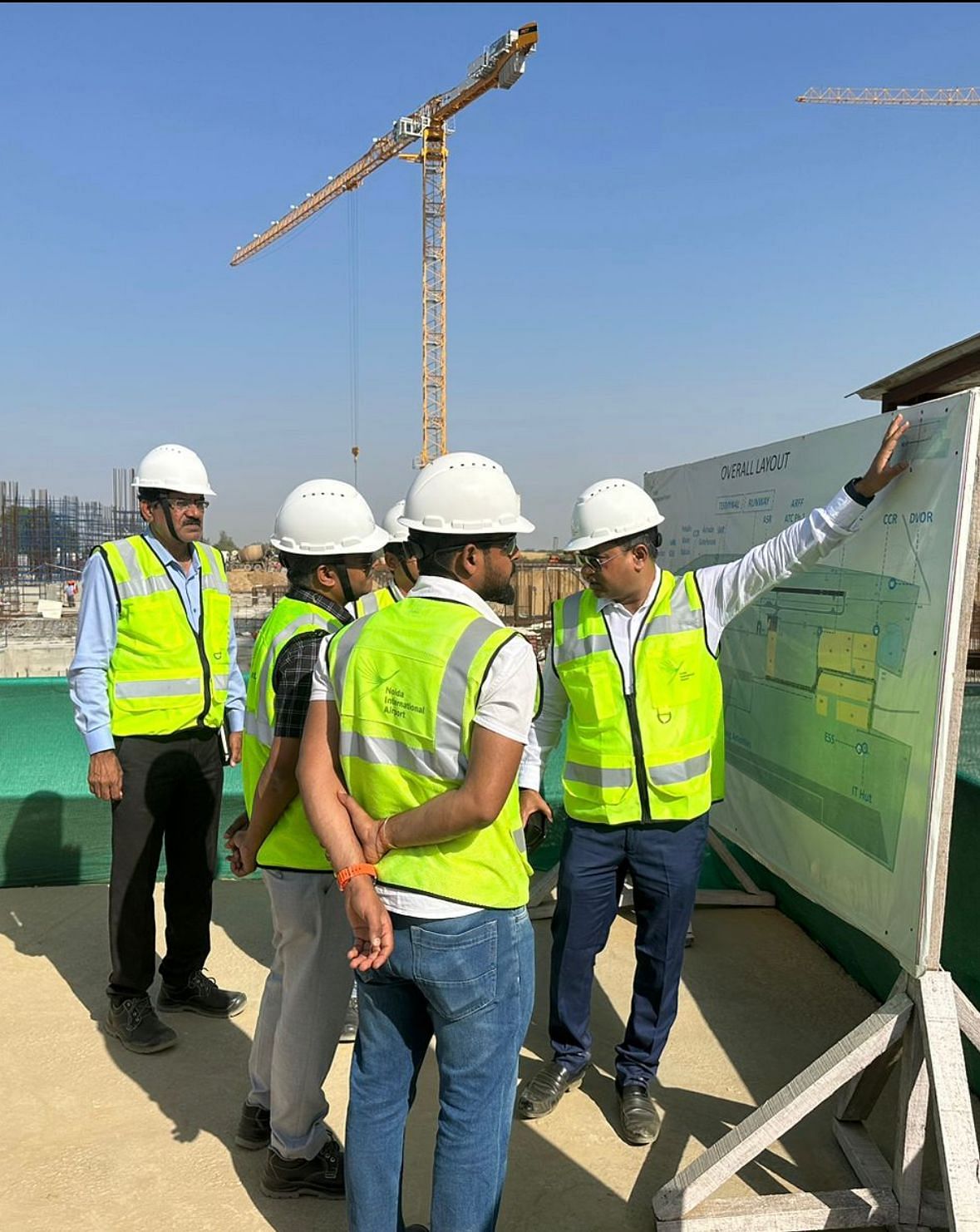
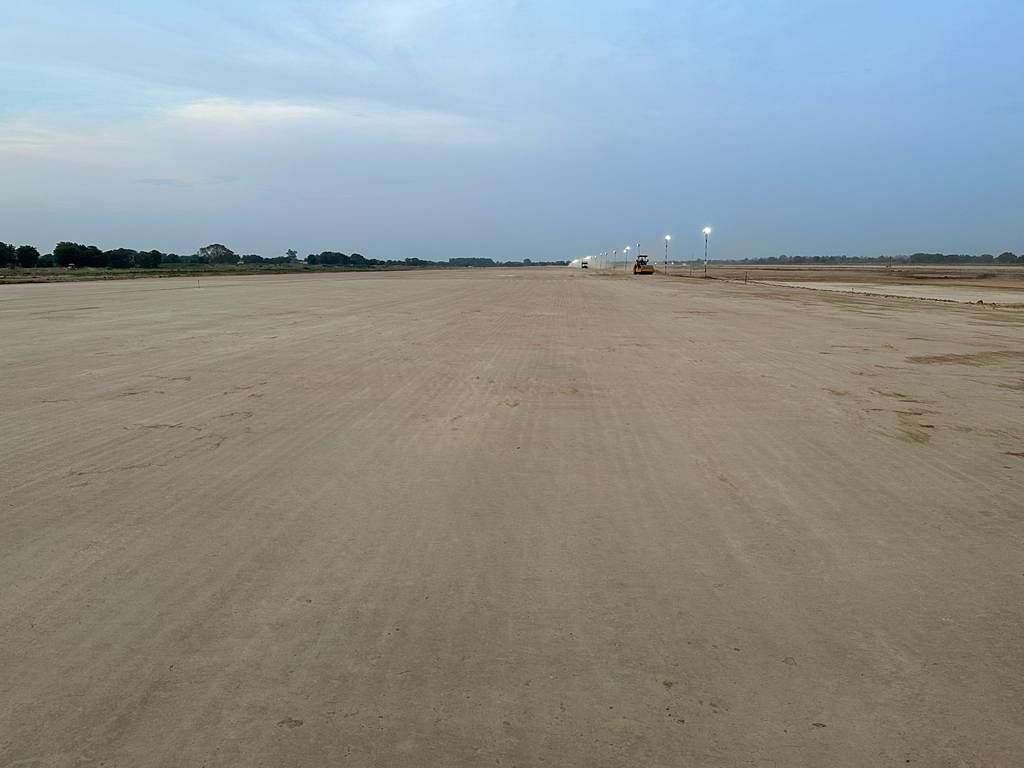
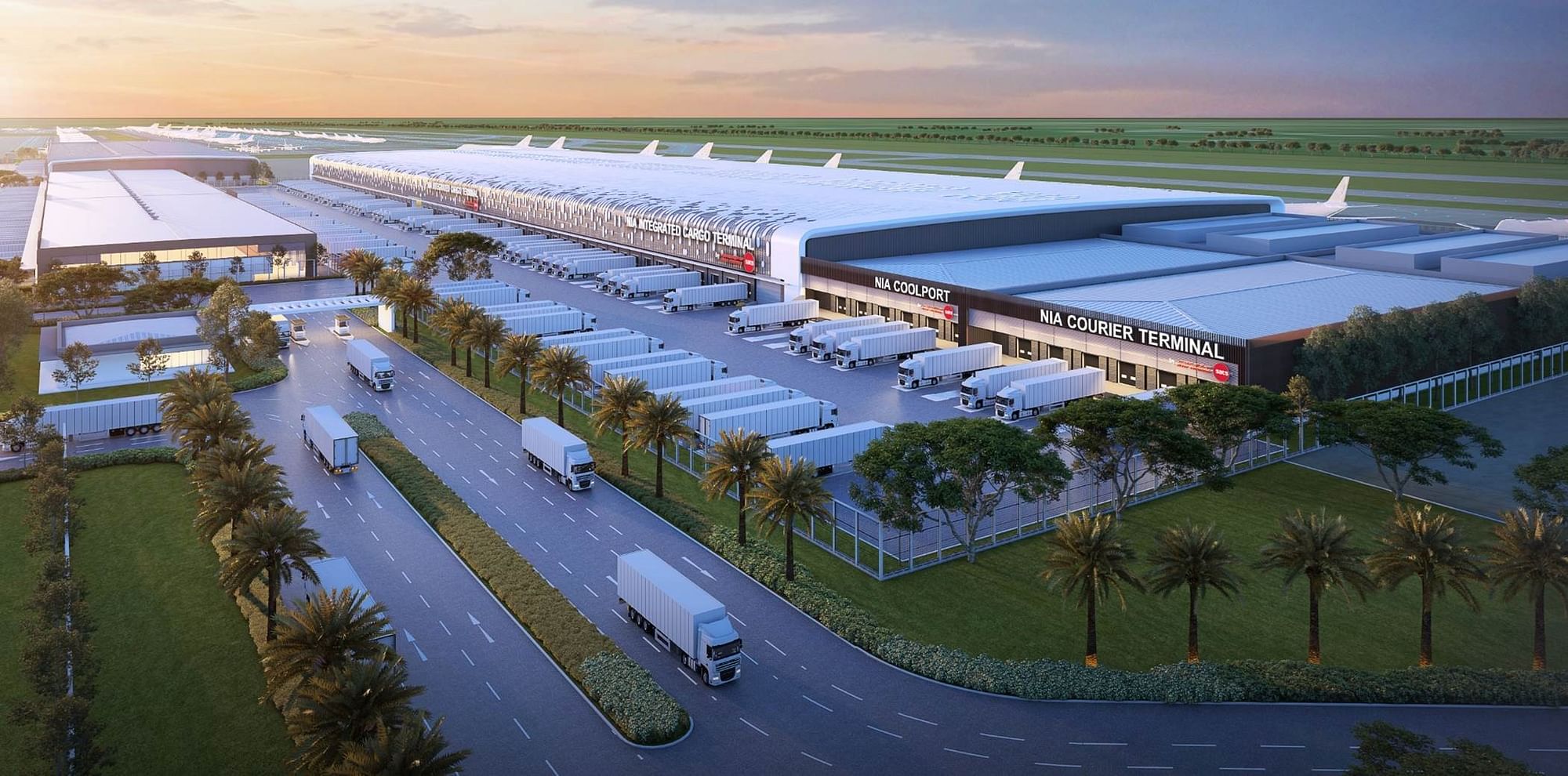
According to Bhatia, “55 per cent of the cargo at the IGI airport originates from the industrial regions of Gautam Buddha Nagar and Ghaziabad. With the development of the Noida facility, these cargo operations will be facilitated more efficiently, benefiting the industries in the area.”
He elaborated on NIA’s advantageous location, explaining that, “It is situated adjacent to the Yamuna Expressway, making it the only airport placed right next to an eight lane, 100 metre wide access control expressway. It is at a mere distance of 700 metre from the expressway, for which the authority has already proposed an elevated direct interchange to facility.”
Bhatia emphasised on the expressway expansion in Uttar Pradesh, and stated, “This airport will be the fifth international airport in the state, and with the ongoing development of the expressway network in the state, it will serve more than 50 districts.” (More on the UP Expressway Network)
“Furthermore, the planned high-speed rail connecting Delhi to Varanasi will include a stoppage at the airport, reducing the travel time from Delhi to just 21 minutes. The rail corridor will also connect the airport to other important cities like Ayodhya and Prayagraj, within a total journey of two to three hours,” he explained.
The extensive expressway network, and upcoming infrastructure such as high-speed rail development, will significantly advance the airport’s potential and ensure seamless connectivity in the state.


